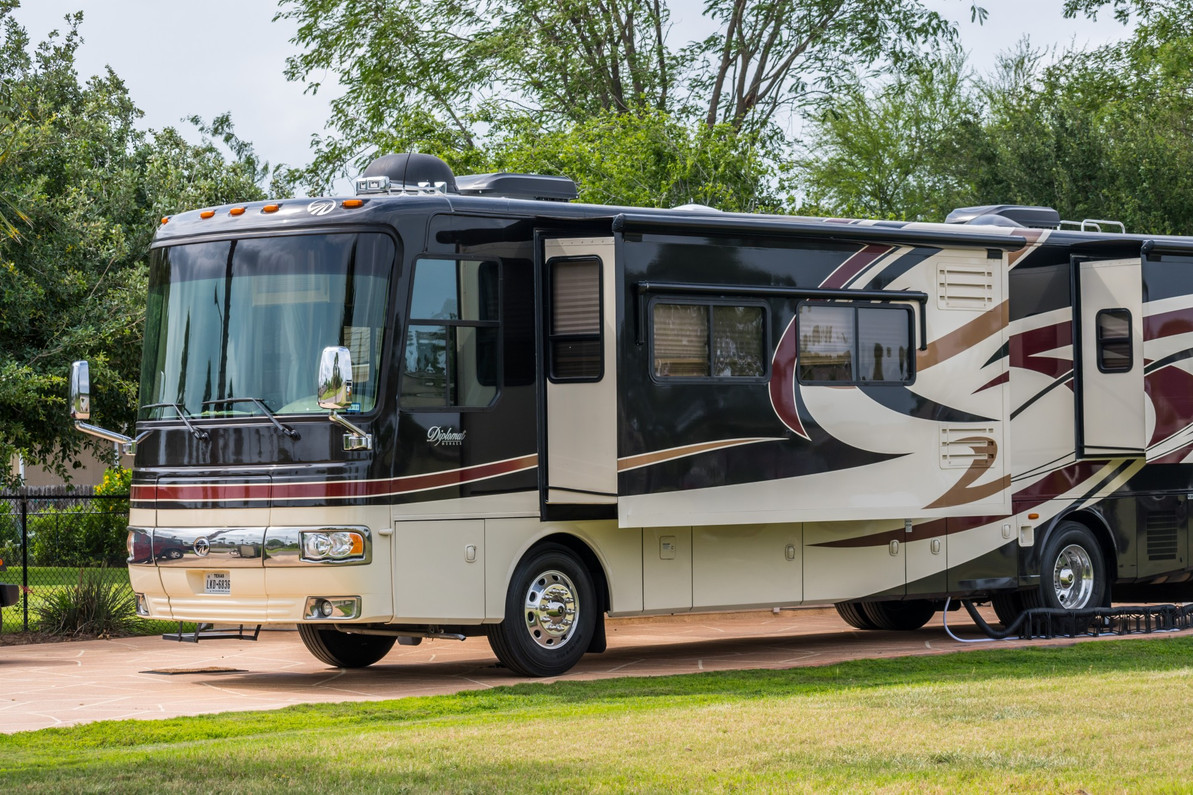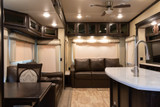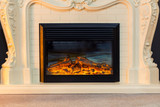Exploring the World of RVs and Trailers: A Beginner's Guide | RecPro
RV Classes And Types
When choosing the right RV for your needs, one of the most significant decisions you'll have to make is whether to go with a Class A, B, or C motorhome, or to opt for a tow behind option. Each type has its pros and cons, but your ideal choice will depend heavily on your specific needs, preferences & budget.
Class A RVs are the largest and most well-equipped type of motorhome. They are often custom-built on a coach bus or truck chassis and can range from 30 to 45 feet in length. They have all the amenities of a home, including climate control, full kitchens, bathrooms, bedrooms, and living areas. They are ideal for long-term travel and full-time living but can be expensive to purchase and operate.
Class B RVs, sometimes called camper vans, are smaller and more compact than Class A RVs. They are constructed on a commercial van chassis and usually range from 16 to 24 feet in length. They are ideal for shorter trips and are more fuel-efficient and easy to drive than Class A RVs. They are also less expensive to purchase but have fewer amenities and less available storage than Class A’s.
Class C RVs are built on a light-duty truck or van chassis and typically range from 24 to 35 feet in length. They have the amenities of a Class A RV with the compact size of a Class B. They are also more affordable than Class A RVs and are great for families and long-term travel. You can identify them in the wild by their classic forward overhang, which usually houses sleeping quarters.
Ultimately, the best RV for you depends on your budget, travel plans, and family or group size. It's essential to consider the fuel consumption, the ease of driving and maintenance, the size and weight of the vehicle, and the amenities you want while on the road.
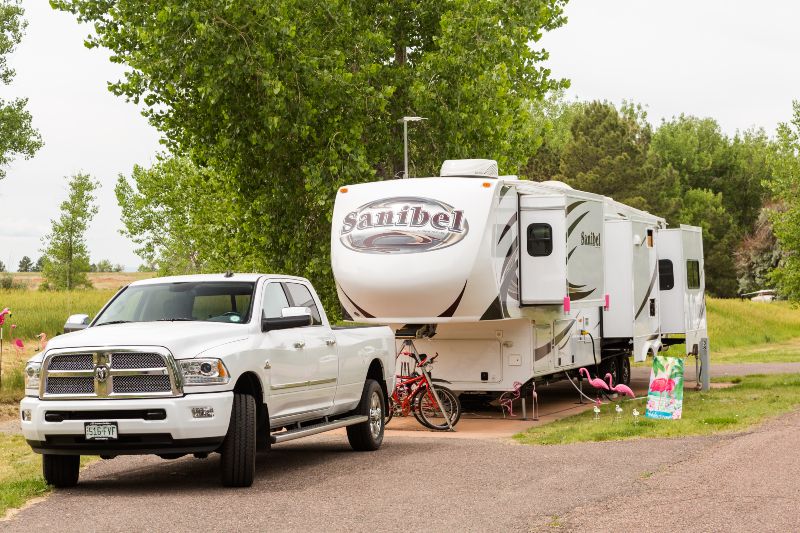
Towable Alternatives
Another option to consider when choosing an RV is a tow-behind trailer. These RVs are hitched to the back of a pickup truck or SUV and can be detached when not in use. Travel trailers are the most common type of tow-behind RV. They range in size from small, lightweight camping trailers to larger, luxury models that can sleep up to 10 people. They offer many amenities, including kitchens, bathrooms, and bedrooms. They are also more affordable than motorhomes and provide more flexibility in towing vehicles.
Fifth-wheel trailers are another popular option for tow-behind RVs. They are similar to travel trailers but have a special hitch that attaches to the bed of a pickup truck. They are larger and more luxurious than travel trailers and offer more living space. They are ideal for full-time living and long-term travel.
Tow-behind RVs are an excellent option for those who already own a pickup truck or SUV and want to take advantage of the extra space and amenities an RV offers. They also offer more flexibility in towing vehicles since you're not limited to a specific type of RV chassis.
All in all, the choice between a motorhome and a tow-behind RV will depend on your budget, travel plans, and the size of your family or group. Motorhomes offer the convenience of being self-contained, while tow-behind RVs provide more flexibility in terms of towing vehicles and can also be more affordable. Both options have pros and cons, and it's essential to be aware of factors that are important to you before making your decision.
Rig Size Plays an Outsized Role in Campsite Availability
There are various options available when it comes to finding places to park and camp with your RV. Still, the availability of sites may vary depending on whether you have a full-size motorhome or a tow-behind trailer.
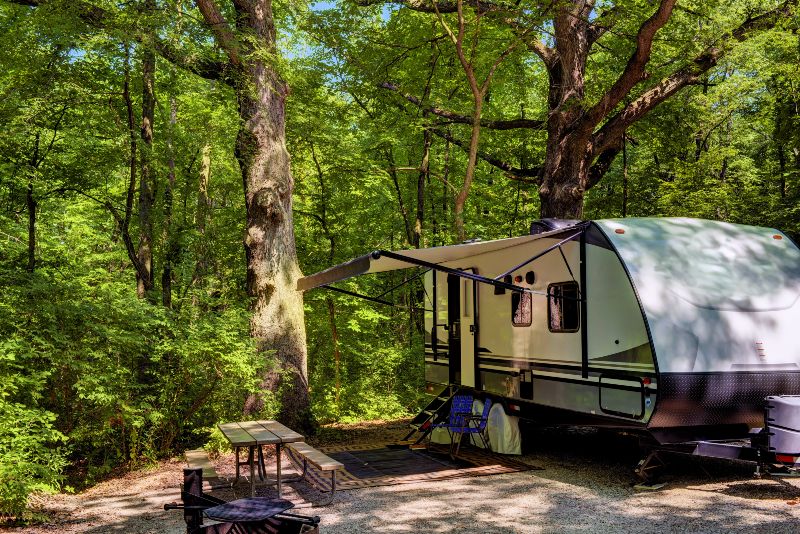 Full-size motorhomes (Class A, B, or C RVs) can typically be accommodated at most RV parks and campgrounds. These facilities are designed to accommodate larger RVs and often have amenities such as full hookups (water, electric, and sewer), restrooms, and showers. Some RV parks may also have additional amenities such as swimming pools, playgrounds, and recreation halls. However, some campgrounds, National Parks, and Bureau of Land Management (BLM) areas may not have RV hookups and can only accommodate dry camping, meaning no hookups and more primitive facilities.
Full-size motorhomes (Class A, B, or C RVs) can typically be accommodated at most RV parks and campgrounds. These facilities are designed to accommodate larger RVs and often have amenities such as full hookups (water, electric, and sewer), restrooms, and showers. Some RV parks may also have additional amenities such as swimming pools, playgrounds, and recreation halls. However, some campgrounds, National Parks, and Bureau of Land Management (BLM) areas may not have RV hookups and can only accommodate dry camping, meaning no hookups and more primitive facilities.
On the other hand, tow-behind trailers may have fewer parking and camping options. Some RV parks and campgrounds may not have the necessary facilities to accommodate these RVs, such as pull-through sites or large enough back-in sites. Additionally, some state parks and national parks may not allow tow-behind trailers or have strict length restrictions, due to road conditions.
However, there are also many private and public campgrounds, RV parks, and boondocking areas that specifically cater to tow-behind trailers and smaller RVs, so it's worth researching and checking site availability before planning your trip.
In general, while both full-size motorhomes and tow-behind trailers have plenty of options for parking and camping, it is crucial to research and plan ahead to ensure that you find a suitable site that can accommodate your RV.
Boondocking Capability
When boondocking in a full-size motorhome, one of the main challenges is the weight differential between full-size RVs and tow-behind trailers. Full-size motorhomes are much heavier and larger than tow-behind trailers, making them less maneuverable and more difficult to access remote and rugged boondocking locations. The weight also limits the options of road surface; many dirt roads and forest service roads may not be able to support the weight of a full-size motorhome and can therefore be off-limits.
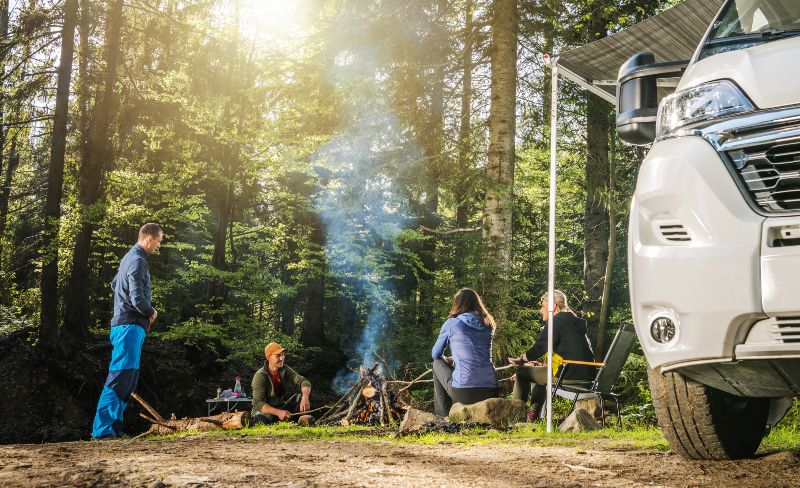 Another challenge is the limited off-road capabilities of full-size motorhomes. These RVs are built on a heavy-duty bus or truck chassis, which makes them less capable of handling rough terrain, steep inclines, and rocky roads. They may also have lower ground clearance than smaller & lighter RVs, making them more susceptible to damage when driving on unpaved roads. Long wheelbases make high-centering all too easy, and tow trucks for heavy vehicles are pretty expensive! Additionally, full-size motorhomes often have limited battery and generator power, making it more challenging to boondock for extended periods without an additional reliable power source such as a generator or solar setup.
Another challenge is the limited off-road capabilities of full-size motorhomes. These RVs are built on a heavy-duty bus or truck chassis, which makes them less capable of handling rough terrain, steep inclines, and rocky roads. They may also have lower ground clearance than smaller & lighter RVs, making them more susceptible to damage when driving on unpaved roads. Long wheelbases make high-centering all too easy, and tow trucks for heavy vehicles are pretty expensive! Additionally, full-size motorhomes often have limited battery and generator power, making it more challenging to boondock for extended periods without an additional reliable power source such as a generator or solar setup.
In short, while full-size motorhomes (Class A) can be used for boondocking, it is a more challenging experience overall than with smaller RVs (Class B or C) or trailers. The weight and size of the vehicle limit the options for boondocking locations, and the vehicle's off-road capabilities are minimal. Researching and planning ahead is crucial to ensure that you have the necessary equipment and resources to boondock safely and comfortably in a full-size motorhome and be aware of the limitations of large, long, and heavy vehicles.
No matter your needs, there is an RV that can suit them!
There are many form factors of RV out there, ranging from the 40-foot, 26,000lb behemoth to the humble pickup truck bed camper... and everything in between. The "best" one for you depends heavily on several personal preferences and the use case of the rig. Once you have identified what features you would like your RV to provide, it should be easier to narrow down which form factor or Class is suitable for your needs.
In your experience, what has been your ideal size RV, and what type of camping did you do with it? Let us know down in the comments!
Recent Posts
-
4 Tips for Securing RV Furniture While Traveling | RecPro
How To Secure RV Furniture There are few things that beat going out on an adventure with an RV …Apr 11th 2024 -
Can You Put Regular Furniture in an RV?
Can you put regular furniture in an RV? Many new and old RV owners ask themselves this qu …Apr 8th 2024 -
Are RV Electric Fireplaces Safe
Being Safe in Your RV with an Electric Fireplace Safety is always going to be one of your highest …Apr 4th 2024 -
How To Install An RV Fireplace
A Warm Addition to Your On-Wheels: The DIY RV Fireplace Installation Guide Many RV enthusiasts ask …Apr 1st 2024 -
Essential Grilling Gear Every RVer Needs
Whether or not you consider yourself a pitmaster or grillmaster, if you’re out on the road with y …Mar 18th 2024 -
Fun and Interesting Places to Visit That Aren’t a National Park
One of the big destinations when RVing is to go to National Parks. You want to get back to nature, h …Mar 4th 2024

